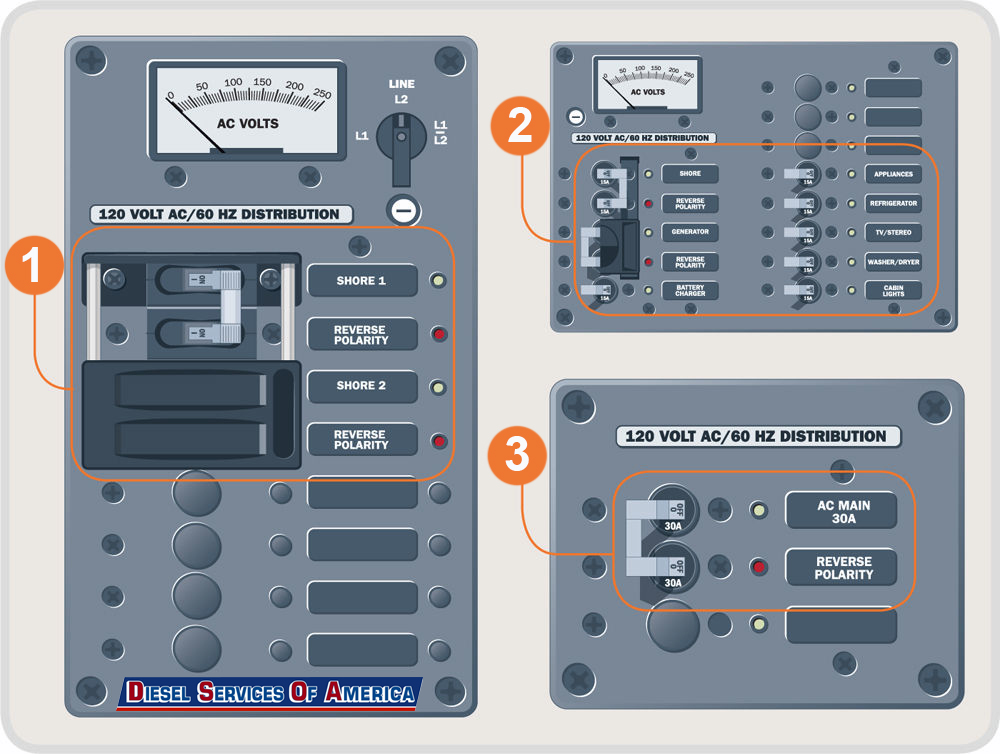
One of the most common questions I get from boat owners when upgrading to a larger boat from a smaller vessel. How to properly switch from shore power to genset and back to shore power safely. It’s not that it is an overly complicated procedure but docking a boat is where most mishaps come into play. Whether you are rushing to get back to the dock and then home. Or the other way around being the first out of the marina to beat other boats to prime fishing grounds. Mistakes can and will happen at and around the dock. Diesel Services of America would like to help you prevent needless harm to your marine generator. Marine generator repair can be easily avoided – learn how to switch from generator to shore power with these easy tips.
Most boat builders will install a transfer breaker that prevents the ever present threat of AC (alternating current) power being delivered by both your shore power supply and the generator concurrently. 2 double pole breakers that have a mechanical slide in between them. Even though this safety mechanism has been put in place, you should follow common genset to shore power protocol. Switching from any AC (alternating current) source and back again should never be rushed. Going over Diesel Services of America’s mental checklist will lessen your chances of having unnecessary marine generator repair.
A) When you do switch from a shore power supply to your generator having the same starting point is a best practice. The first step is to locate the shore power switch (1) on the distribution panel and turn to off position. Do the same for the branch circuit (2) and the main breaker (3). This first part of the procedure stops the marine generator from being instantly loaded upon initial start up.
B) Back to the dock and dockside power pedestal. Turn off the breaker on the pedestal and then unplug the ship to shore power cord first from the dockside pedestal and then the boat inlet. The main reason for this procedure is incase you accidentally drop it in the water, it’s not powered. Dropping in the water will happen if you rush yourself or your mate.

C) Keep in mind that your generator is a power plant supplied by fuel either gas or diesel. In layman’s terms an engine so properly run the blower before starting your marine generator. Using the transfer breaker to switch from shore power to your marine genset is the next step. After starting your marine generator let it run for 5 to 10 minutes. Then you can power up the independent branch circuits.
D) After your voyage upon returning to the dock do not immediately power down your marine generator. The best method is to power down systems allowing your marine generator then a ten minute cool down with zero load. This part of the procedure will ensure a greater longevity along with promoting durableness of your marine generator. After your generator is properly shut down make sure your close the intake seacock. This will not allow water to be forced back into the cooling system.

E) Now that you are back at the dock securely, plug in the ship to shore power cord at the boat inlet first. Then plug the male end of the ship to shore cord into the dockside pedestal. After the ship to shore connections have been made turn on the breaker at the dockside pedestal. Then switch the source on the distribution panel at the transfer switch. Now you can power on the independant circuits.
Diesel Services of America can service all major marine generators. DSOA also has a complete inventory of marine generators parts.
Switch from Generator to Shore Power
![]()